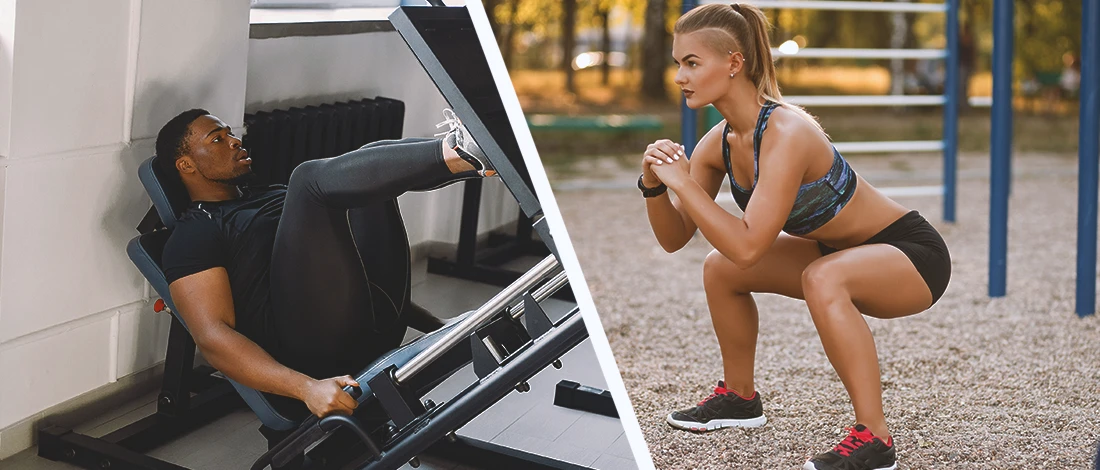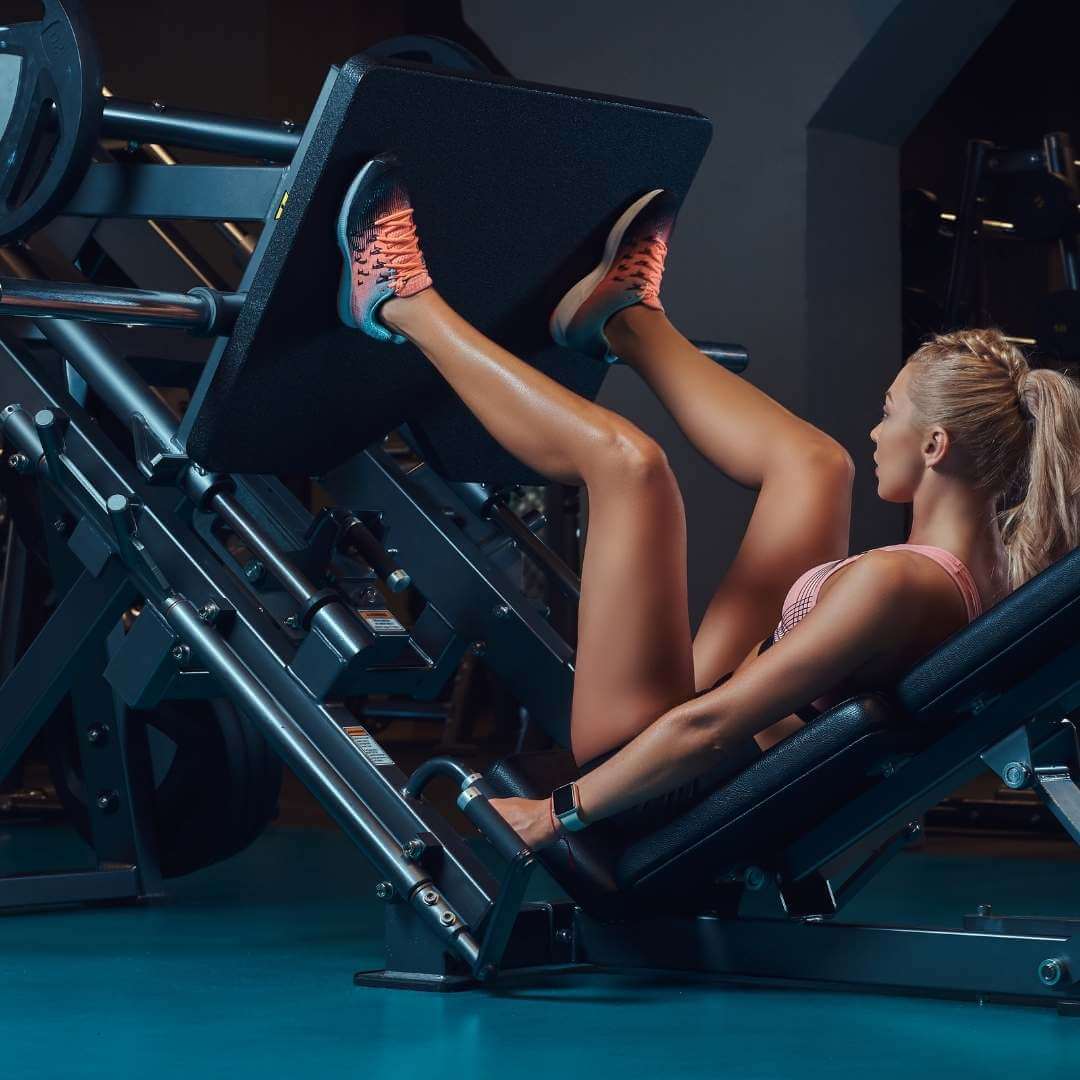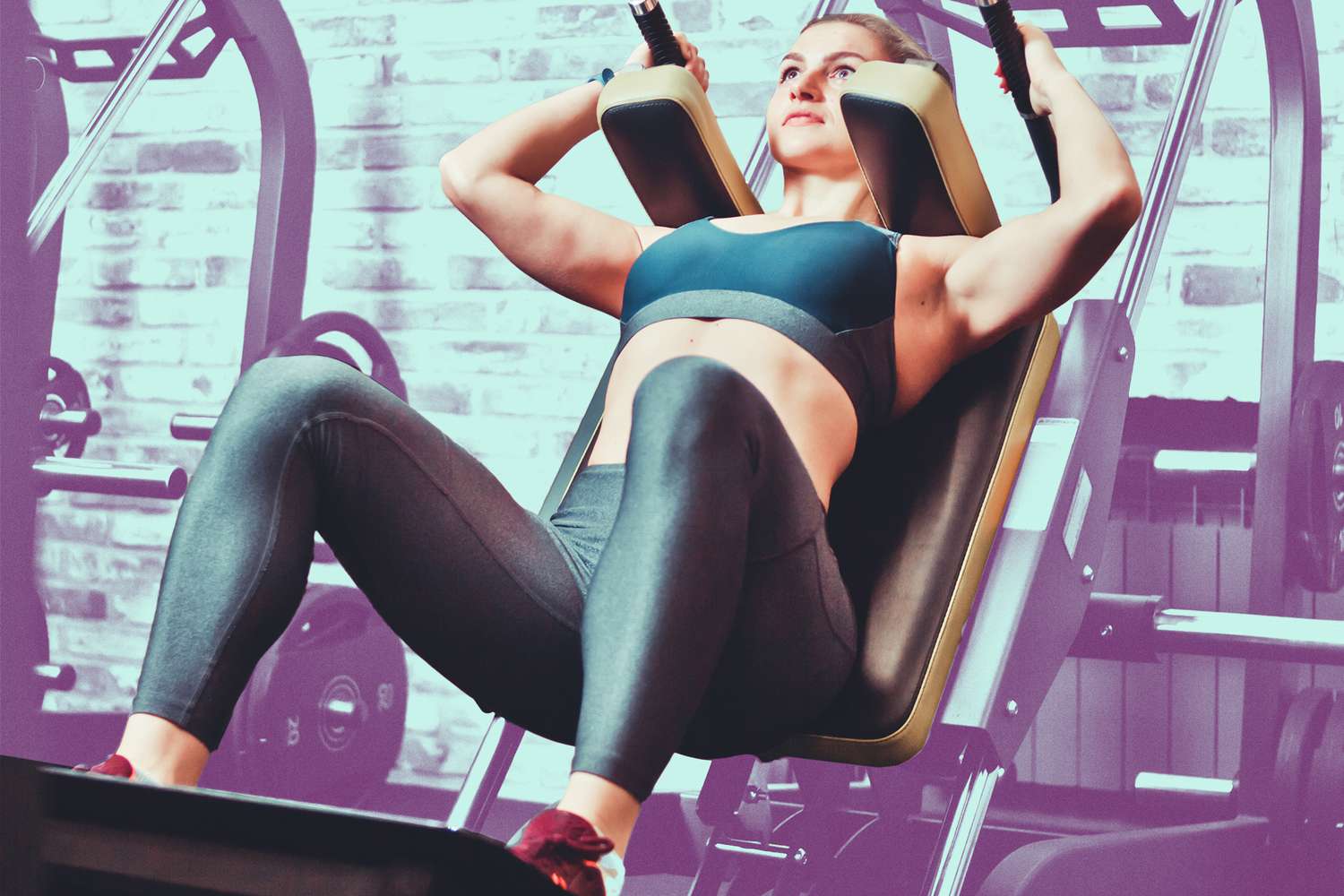Are you looking to build strong and muscular legs? If so, you’ve probably come across the debate between squats vs leg presses. These two exercises are often pitted against each other, leaving many people wondering which one is better for leg development. Well, fear not, because, in this post, we’ll see the differences between squats and leg presses, helping you make an informed decision about which exercise to incorporate into your leg day routine.

Contents
- 1 Squat vs Leg Press: Which is Better?
- 1.1 1. Muscle Engagement:
- 1.2 2. Risk of Injury:
- 1.3 3. Equipment and Accessibility:
- 1.4 4. Skill Level and Technique:
- 1.5 5. Functional Strength:
- 1.6 6. Muscle Activation:
- 1.7 7. Range of Motion:
- 1.8 8. Risk of Injury:
- 1.9 9. Core Engagement:
- 1.10 10. Equipment Requirements:
- 1.11 11. Skill Level:
- 1.12 12. Versatility:
- 1.13 13. Functional Fitness:
- 2 Frequently Asked Questions:
Squat vs Leg Press: Which is Better?
Both squats and leg presses are excellent exercises for strengthening your lower body, but they each have their own advantages and disadvantages. Choosing the “more effective” option depends on your specific goals and limitations. Here’s a breakdown:
1. Muscle Engagement:
Squats are a compound exercise that engage multiple muscle groups across the body, including the quadriceps, hamstrings, glutes, lower back, and core. This broad engagement promotes functional strength and balance, simulating real-life movements and activities.

The leg press primarily targets the quadriceps, hamstrings, and glutes but involves less stabilization from the core and lower back compared to squats. Since it’s performed on a machine, the leg press focuses more on isolating these lower body muscles with less engagement of secondary muscle groups.
2. Risk of Injury:
Squats, especially when performed with heavy weights or improper form, can increase the risk of injury to the knees, lower back, and shoulders. Proper technique, including maintaining a neutral spine and not letting the knees extend far beyond the toes, is crucial for safety.
The leg press has a lower risk of injury when used correctly because the machine guides the movement, reducing the strain on the back and knees. However, incorrect settings or excessive weight can still pose risks, particularly to the lower back and knees.
3. Equipment and Accessibility:
Squats can be performed with or without equipment, making them highly accessible. They can be done using body weight, barbells, dumbbells, or kettlebells, offering versatility in training environments from gyms to home settings.

The leg press requires a specific machine, which may not be available outside of a gym setting. This can limit accessibility for those who prefer or need to train at home or do not have a gym membership.
4. Skill Level and Technique:
Squats require more technical skill and body awareness to perform correctly, especially under heavy loads. Proper squatting technique involves coordination, balance, and the ability to maintain a stable posture throughout the movement.
The leg press is generally considered easier to learn and perform, as the machine guides the movement. This can make it a more approachable option for beginners or those working on building foundational leg strength before progressing to more complex exercises like squats.
5. Functional Strength:
Squats are highly effective for building functional strength, which is the strength that helps you perform everyday activities. By engaging multiple muscle groups and requiring body-wide coordination, squats improve overall athleticism, balance, and mobility.

While the leg press can significantly increase leg strength, it is less effective at developing functional strength due to the isolated nature of the exercise and the lack of engagement of stabilizing muscles and core.
6. Muscle Activation:
Squats are a compound exercise that activates multiple muscle groups simultaneously, including the quadriceps, hamstrings, glutes, lower back, and core. This widespread activation promotes functional strength and muscle coordination.
The leg press focuses more specifically on the quadriceps, hamstrings, and glutes, with less activation of the core and lower back compared to squats. It allows for targeted muscle building in the legs.
7. Range of Motion:
Squats require a full range of motion, engaging the muscles through a deep bend in the knees and hips. This full range promotes flexibility and joint health.
The leg press machine restricts the range of motion to the path set by the equipment, which can limit flexibility gains but allows for isolation of the leg muscles.
8. Risk of Injury:
Squats, especially with heavy weights, require proper form to avoid injury. Incorrect technique can lead to knee, back, or shoulder injuries.
While the leg press has a lower risk of causing injuries due to its controlled movement, improper weight selection or incorrect foot placement can still lead to strain, particularly on the knees.
9. Core Engagement:
Squats heavily engage the core muscles to stabilize the body throughout the movement, enhancing core strength and stability.

The leg press offers minimal core engagement since the machine supports the back and torso, focusing the effort on the legs.
10. Equipment Requirements:
Squats typically require a barbell and, for safety, a squat rack. They can also be performed with dumbbells or kettlebells, or even with no equipment at all (bodyweight squats).
The leg press requires a specific machine, which might not be available in all fitness settings, especially in home gyms.
11. Skill Level:
Squats demand a higher skill level to execute with proper form, especially as weights increase. They require awareness of body positioning and balance.
The leg press is generally considered easier to learn for beginners, as the machine guides the movement, reducing the need for balance and technique.
12. Versatility:
Squats are highly versatile and can be modified in numerous ways to target different muscle groups, such as sumo squats, front squats, and overhead squats.
While variations exist, such as changing foot placement on the plate, the leg press is less versatile than squats due to the limitations of the machine.
13. Functional Fitness:
Squats are highly beneficial for functional fitness, improving movements used in daily life, sports, and various physical activities.
Leg press exercises are less functional since they don’t mimic everyday movements as closely and involve less balance and body coordination.
Frequently Asked Questions:
Why do people leg press more than they squat?
With the leg press, you don’t need upper body and core stability, and there is less compressive stress on your lower back. On the other hand, a lot of squat variations involve a compressive load on your spine.
Are leg press better than squat?
If you want to build and strengthen your quads and glutes for monster-sized wheels, squats and leg presses are both go-to moves that will deliver big-time results. However, if you’ve only got time for one, choose squats. Squats are far more complex lifts that when performed correctly will deliver superior results.
What happens if I only do squats?
It would build you powerful legs as squats involve a very large group of muscles such as hamstrings, glutes, adductors, and a considerable amount of calves. However, to add shape to your legs, consider adding leg extensions and lunges to your workout routine.
Are squats enough for leg day?
The squat is one of the movements that almost everyone can benefit from learning and mastering. For most people, it should make up the majority of your leg training. However, squatting alone is unlikely to be enough. Incorporate other exercises to target different muscles and achieve well-rounded leg development.
Do I need to do leg press if I did squats?
Squats and leg presses are complementary exercises. Because they work the same muscles (although with different emphasis), it is a good idea to use balance to avoid overtraining. Watch your load with the leg press if you are also planning to do squats. Alternatively, you can perform the exercises on different days.

Hello, I’m Ravindra. Over the years, I’ve immersed myself deeply into the world of fitness and health, transforming both my body and mind. Writing has allowed me to share my journey, insights, and expertise with those just starting out and seasoned fitness enthusiasts alike. Beyond just routines and diets, I believe in inspiring others to adopt a holistic approach to well-being.
